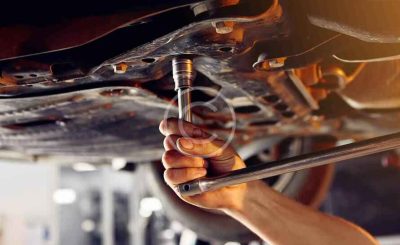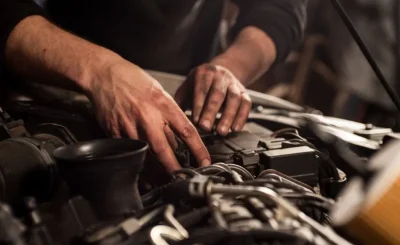In industries where heavy machinery and vehicles play vital roles, efficient power transmission is key to productivity and reliability. One of the most crucial components that make this possible is the power take off, commonly known as PTO. As mechanical systems evolve, so does the innovation behind power take off design. Modern advancements have transformed PTOs from simple mechanical connectors into highly efficient, safe, and versatile systems that enhance equipment performance while minimizing operational risks. These innovations have redefined how industries utilize mechanical power, leading to safer, more reliable, and energy-efficient operations.
Understanding the Role of Power Take Offs in Modern Equipment
A power take off is a device that transfers mechanical power from an engine to auxiliary equipment, allowing machines to perform a variety of tasks without the need for additional engines. Found in applications such as trucks, tractors, and industrial machines, PTOs enable the use of hydraulic pumps, compressors, blowers, and other attachments powered directly by the main engine.
In traditional systems, power take offs functioned primarily as mechanical links that engaged or disengaged power transmission through gears or clutches. While this design provided functionality, it often lacked precision and safety features. Over time, the demands for efficiency, operator safety, and environmental compliance have driven manufacturers to redesign PTO systems for higher reliability and smarter performance.
Modern PTO systems incorporate advanced materials, better engagement mechanisms, and sophisticated control technologies. These improvements help reduce mechanical wear, prevent overloads, and optimize energy use. The innovations in design have also addressed long-standing challenges such as torque fluctuations, noise reduction, and operator protection, making power take offs essential to modern machinery design.
One of the most significant benefits of power take offs is their ability to make machines more versatile. A single vehicle or engine can now perform multiple functions, from operating hydraulic cranes to powering vacuum pumps or generators. This adaptability reduces the need for additional equipment, cuts fuel consumption, and improves operational efficiency across industries.
Advancements in Power Take Off Design and Technology
Innovation in power take off design has focused primarily on enhancing efficiency, improving safety, and minimizing downtime. Among the most notable developments are improvements in clutch systems, control interfaces, and material engineering.
One major advancement is the use of hydraulic and electro-pneumatic clutch systems. Unlike traditional mechanical linkages, these systems offer smoother engagement and disengagement, reducing shock loads on both the engine and driven equipment. This improvement not only extends the lifespan of mechanical components but also minimizes maintenance needs. The ability to engage PTOs under load or remotely has further increased convenience and operational safety, particularly in vehicles that require frequent power switching.
Materials used in modern PTO construction have also evolved. High-strength alloys, composite housings, and heat-resistant seals contribute to better performance under demanding conditions. These materials reduce friction losses and enhance durability, allowing PTOs to operate efficiently even under continuous load. With better thermal stability and corrosion resistance, modern systems can withstand harsh industrial or agricultural environments where older designs might fail.
Another innovation lies in noise and vibration reduction. Engineers have refined gear tooth profiles and improved balancing methods, resulting in quieter operation and reduced vibration transfer to the vehicle or machine chassis. This not only enhances operator comfort but also lowers mechanical stress on connected systems.
Safety has also been a driving factor in the evolution of power take offs. Modern PTOs now include built-in overload protection mechanisms, ensuring that if torque exceeds safe levels, the system disengages automatically. This feature prevents damage to both the PTO and the driven equipment, reducing costly repairs and downtime. Some systems even include sensors that monitor torque, speed, and temperature, alerting operators before potential failures occur.
In addition, digital control systems have revolutionized how operators interact with power take offs. Through smart interfaces and real-time monitoring, operators can now engage or disengage PTOs from within the cab using electronic switches. Some advanced systems are integrated with vehicle telematics, allowing data collection and diagnostics that improve preventive maintenance and enhance overall efficiency.
Environmental sustainability has also influenced PTO innovation. With rising concerns over emissions and energy use, manufacturers have developed systems that reduce parasitic losses and improve overall fuel efficiency. By allowing equipment to operate only when needed and at optimal power levels, these systems contribute to more sustainable industrial and agricultural operations.
Benefits of Modern Power Take Off Systems
The evolution of power take off design has delivered numerous benefits to both equipment operators and manufacturers. One of the most notable is enhanced energy efficiency. Modern PTOs transmit power with minimal losses, ensuring that more of the engine’s output is used productively. This efficiency translates into lower fuel consumption, making machines more cost-effective and environmentally friendly.
Another advantage is improved operational safety. The integration of automated engagement systems, overload protection, and electronic monitoring greatly reduces the risk of accidents and equipment failure. Operators no longer need to manually adjust or engage mechanical levers while the machine is running, which minimizes exposure to moving parts and potential hazards.
Durability has also improved significantly. With better materials and design, power take offs now last longer and require less frequent maintenance. This reliability is crucial for industries that rely on continuous operation, such as construction, mining, and logistics. The reduced downtime not only saves time but also boosts productivity.
Versatility remains one of the strongest advantages of modern PTO systems. The ability to power multiple auxiliary devices from one engine provides unmatched flexibility. Fleet operators, for instance, can use the same vehicle for various applications, from lifting operations to vacuum or pumping tasks, without modifying the engine or drivetrain.
From a cost perspective, the innovations in power take off design lead to long-term savings. The reduced need for additional engines or external power sources lowers capital expenses, while enhanced efficiency and reduced wear cut operating costs. The simplicity of integration and operation also reduces training time and operational complexity for equipment operators.
The Future of Power Take Off Technology
As industries continue to embrace automation and digital transformation, the future of power take offs lies in smarter, more connected systems. The next generation of PTOs is expected to feature fully integrated sensors that provide predictive maintenance alerts and performance data in real time. This will enable operators and maintenance teams to detect inefficiencies or potential faults before they cause downtime, optimizing performance and longevity.
Electric and hybrid power systems are also shaping the future of PTO technology. With the rise of electric vehicles and renewable energy applications, electric-driven PTOs are becoming increasingly popular. These systems eliminate the need for mechanical linkages, offering quiet, efficient, and environmentally friendly power transfer. They are especially beneficial for urban operations where noise and emissions regulations are strict.
Furthermore, advancements in automation will allow PTO systems to synchronize automatically with onboard equipment, optimizing torque and speed without manual intervention. This level of control will enhance precision in applications like material handling, agriculture, and mobile hydraulics.
Safety standards will continue to evolve alongside technology. Future PTO systems will incorporate even more sophisticated safety protocols, including automatic disengagement during system faults, fail-safe shutdowns, and integration with vehicle stability control systems. These features will make power take offs safer and more reliable than ever before.
The continued innovation in power take off design demonstrates the industry’s commitment to improving efficiency, reliability, and safety. From mechanical advancements to digital integration, each evolution reflects a step toward smarter and more sustainable industrial operations. Power take offs, once simple mechanical devices, have become intelligent components that drive productivity and protect valuable equipment. As technology advances, these systems will continue to play an essential role in shaping the future of industrial machinery, providing the power, precision, and protection modern operations demand.








